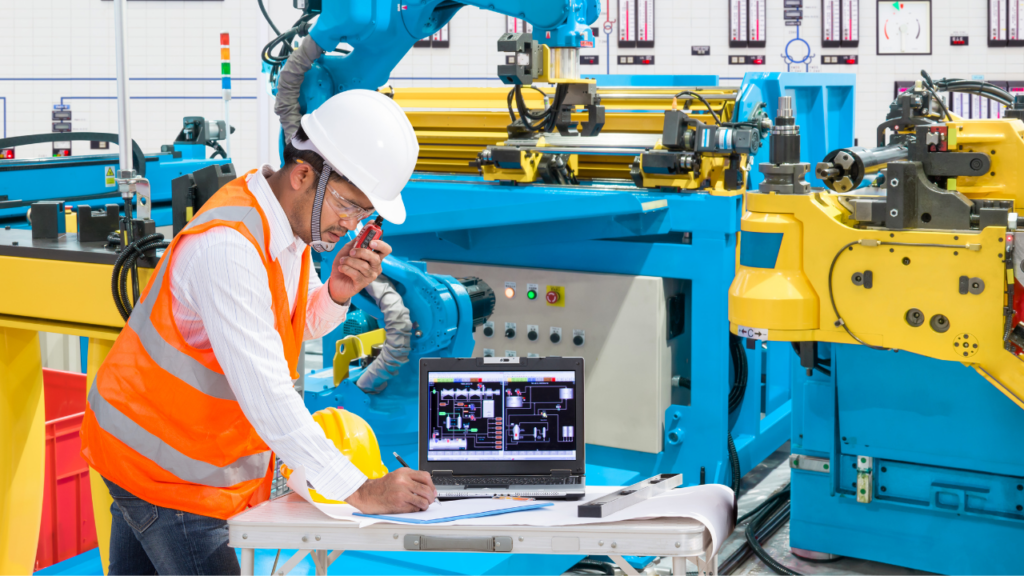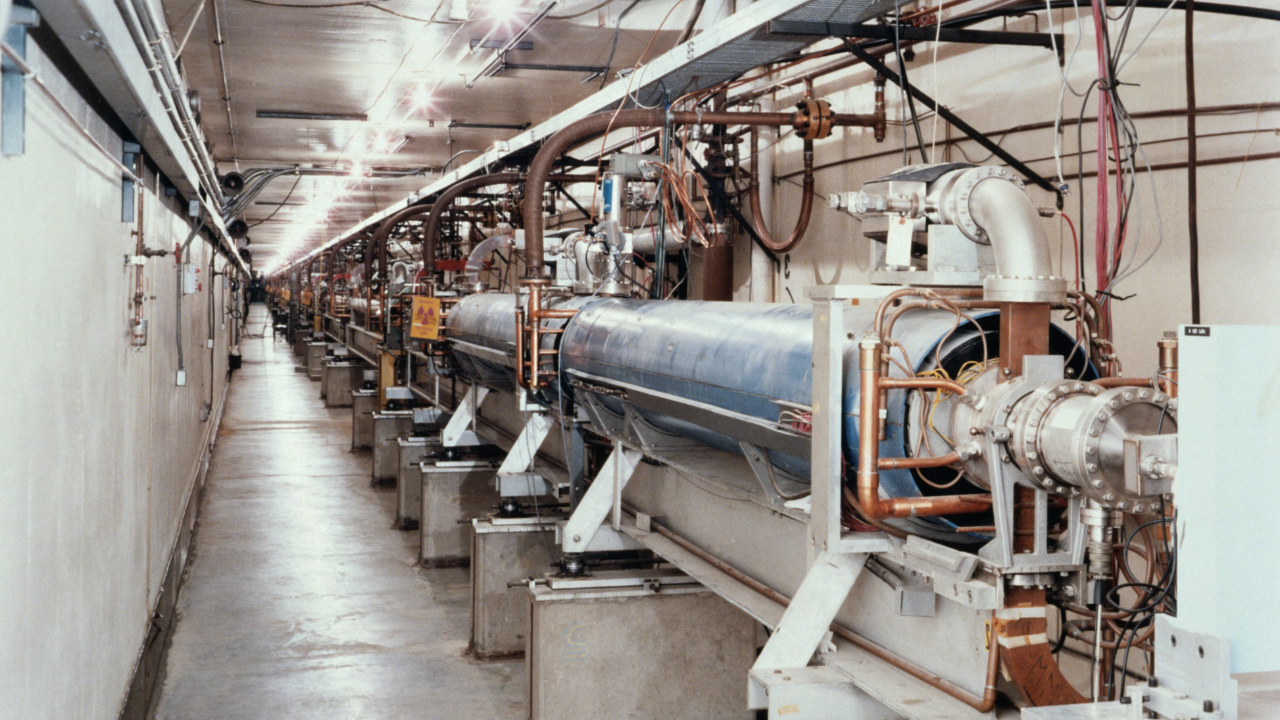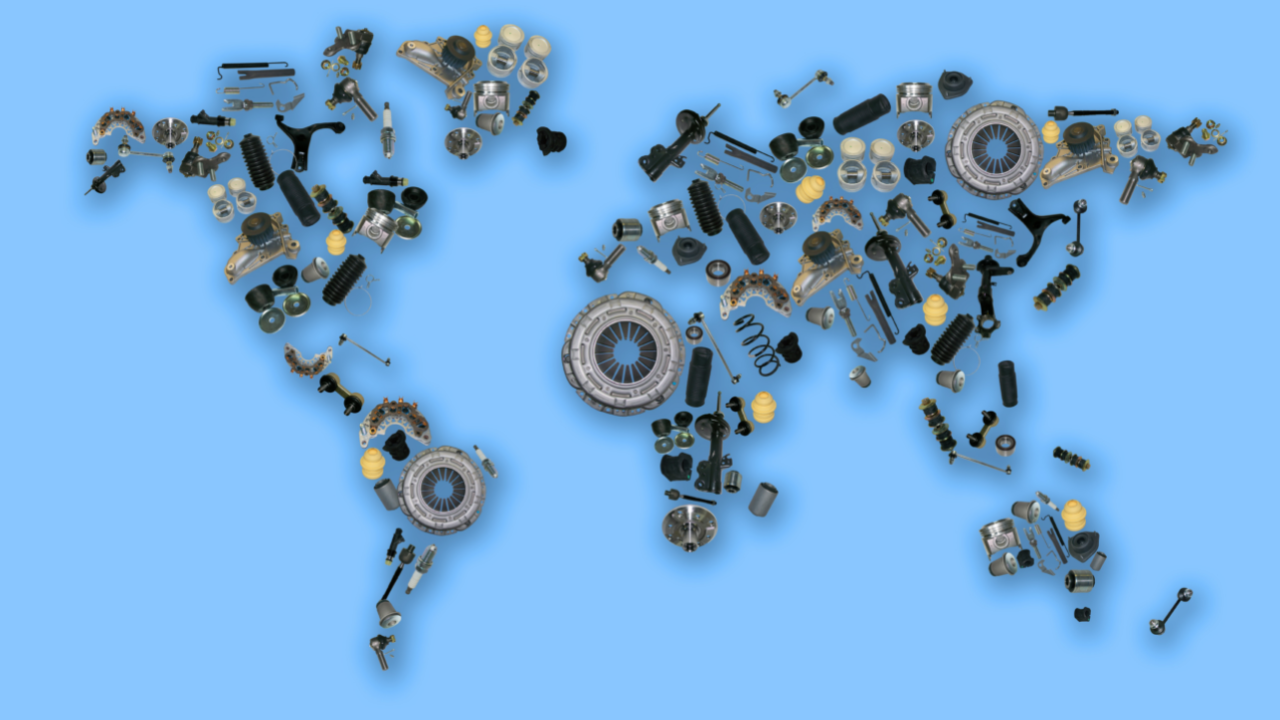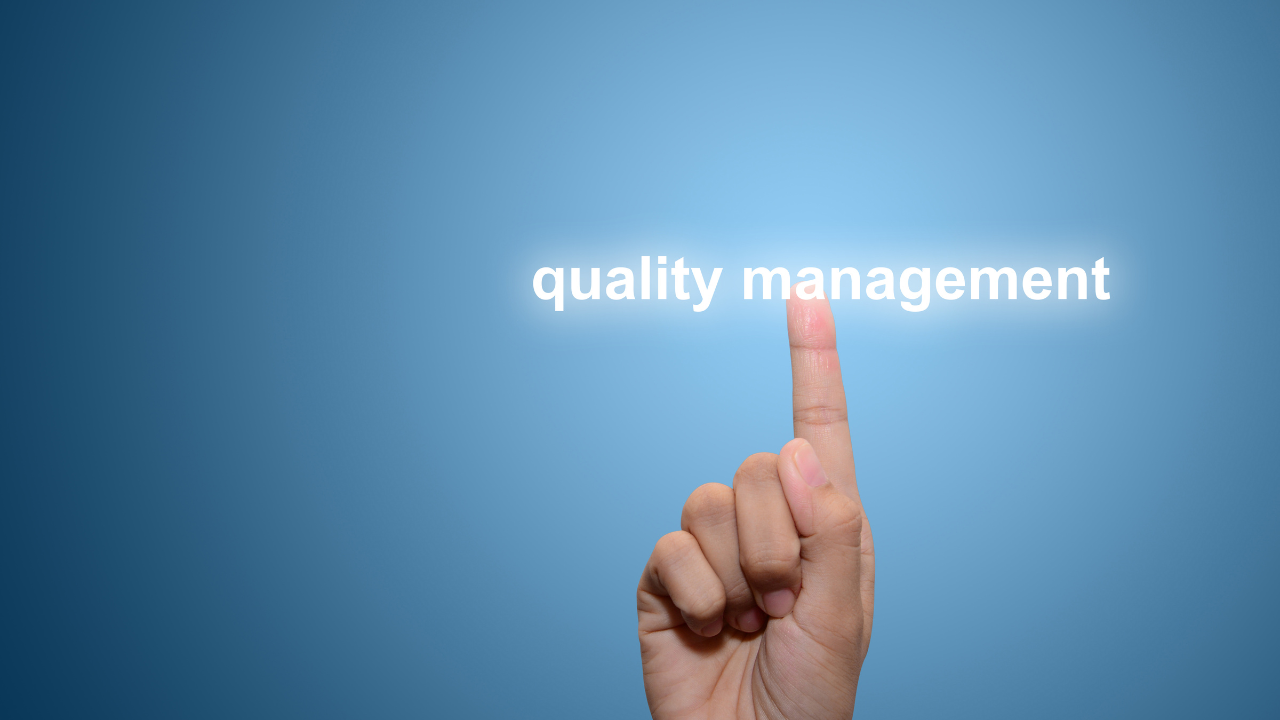What is Plant Maintenance?
John Q. Todd, Sr. Business Consultant/Product Researcher, Total Resource Management (TRM), Inc.
Posted 11/30/2023
Plant maintenance involves much more than just adding water when you remember to.
Oh. Oops, wrong topic!
But that out-of-context statement does bring up a good point: How well thought out, planned, and then scheduled are your plant maintenance (or asset management) activities? Is every day filled with chaos and uncertainty, or are the tasks at hand mostly known… and accomplished?
Our supposition is that your day is a mixture of the two… somewhat organized chaos. If we are being honest, would you agree?
What are your goals?
What you are doing vs. what you should be doing can often be different things. If you think that your efforts are only to increase uptime (or decrease downtime) then you are not seeing the entire picture. Yes, uptime and maintenance budgets are important, as are the needs of the Operations teams, but in the end, it’s the association your efforts have with the corporate goals that should be the driver. It is not unusual for a goal to be ROI, or profit. The implementation of best practices is subject to the long- or short-term goals, including ROI.
Best practices are a very good thing if they are applied in the correct context. What some industry standard touts may work in some places, but not others. They can lead to waste of many kinds. We bring this up because no matter how you go about something, it needs to suit your context and be in support of… you guessed it… those pesky corporate goals.
The company may have stated goals of producing 100,000 widgets per day. This puts pressure on the production lines and the maintenance teams that support them. But where do the widgets go after that? Maybe the actual goal should be getting those 100,000 units shipped out to the channels, now putting the pressure on the logistics staff (who also use equipment that needs to be maintained) to fill the waiting trucks.
While you may have separate groups of staff looking after the different areas of the plant (including contractors), they should all be driving to the same set of corporate goals. If the production line is humming along, yet the loading dock only has one working forklift… well, those widgets are going to be sitting around for too long. Warehouse space is not cheap!
Find the goals… post the goals… talk about the goals… focus your day on the goals. There is a free “best practice” for you!

How goes it?
Given the goal(s), how are you doing against them? Meeting or exceeding? Woefully short?
What is the variation over time around those 100,000 widgets per day. Is it acceptable? How about the number shipped each day? Is that variation bigger or smaller? Are the shelves in the staging area always full or could they be removed, and the floor space used for something else?
The point is, not only do you need to know your goals, but you need to understand how performance against them is measured. Some financial and regulatory goals can be quite mind-bending to have a clear picture of. Not a problem. Your job is to understand how your daily tasks measure up to them.
“That which is measured, improves… and can be manipulated by smart people,” is a commonly used phrase. Make sure the data you and your teams are entering in support of the measurement activities is true, correct, and consistent. Reduce the risk of “bad data,” as much as possible.
How to get there?
Finally, we can get into the different approaches to plant maintenance. No matter the approach or approaches taken, they all need to produce results in support of your goals. Also, some approaches may only work for a period of time and then you need to make adjustments. Yet, there may be ways of doing things that have worked for 30 years, and there is no need to change them.
Run to fail “maintenance” is one way and is in some contexts valid. Some equipment is just not worth trying to maintain and is easy to replace as needed. While this approach should be used sparingly, with forethought and the right pieces in place, it can serve you just fine for some things. Use it up until just before failure, dispose of it and put in another. Maybe the equipment will go out for refurbishment and then returns for another few cycles as a spare, pressed into service as needed. You need to have a very good handle on the capabilities of these types of equipment to operate in this manner.
Preventive maintenance is a very wide approach and can mean many different things. Overall, it is performing maintenance tasks on equipment to preserve or extend their service to the organization. (Think lubrication, alignment, cleaning, etc.) What you do can be based on simply calendar time, or it could be based upon actual operational time (Run Hours, Odometer, etc.)
No matter the trigger for you to perform a PM, what you are doing is what is important. Is the list of tasks clear? Are the necessary consumables and tools available? Is the equipment in a state where it can be worked on? Are the workers doing the work qualified? Has there been enough time allocated for the work teams to perform the work at a reasonable and safe pace?
Inferred throughout the concept of preventive maintenance is planning and scheduling.
You need to know what is coming, what you need to do the work, and then schedule it for it to happen. Planning and scheduling are not the same thing… they are very different, yet critical actions to take, even for a modestly sized operation.
Predictive maintenance (could use the term “condition monitoring” as well) brings in data science and other seemingly non-maintenance related disciplines to the game.
The idea is, by reviewing available data, software tools can predict to some degree of confidence that a failure may occur at some reasonable time in the future. If you have been in place for 30 years, you may have developed a gut feeling when a particular piece of equipment fails and how. This is a good thing, but you will not be in place forever. Rather, do you have sources of data that a system could review and predict closely to your gut? It is a powerful thing to be able to know, with a good degree of confidence, based upon available data, that a failure may occur in 20-30 days.
There are many, many software tools available on the market in the areas of failure prediction and anomaly detection. Yes, they use machine learning models and methods to make these predictions and are only as good as the data they are given. It will take time for them to learn and to produce actionable alerts and other insights.
Do you jump every time they cry wolf? No. But given reasonable data from your equipment or operations and time to learn, these software tools can become very useful in the decision-making process.

We’ve been doing this a long time. Are you saying to start over?
No. You will find that you can keep most of what you are doing now… just refine! You might be inspecting now by looking, listening, feeling, and smelling. Keep doing that, but now capture data as well. Take the time to assess where you are at… not only in relation to your goals, but perhaps where others are in your industry… including competitors.
Do you have good lists of the equipment that requires maintenance throughout the plant? Are these “lists,” in a form… hopefully a database… where anyone who needs access can see what, where, what is coming, and work history? Are the spare parts (Bill of Materials) needed, known and available? Operations and Maintenance manuals available? Staff qualified?
Given that you know what your equipment is, down to the individual piece, what specifically (and when) are you performing preventive tasks? Are the processes, procedures, responsibilities, and priorities clear to everyone? How well-prepared are the new staff members to work on their own?
Have shutdowns or turnarounds been chaotic? This goes back to the planning and scheduling notion mentioned earlier. These “projects,” are just that and need to be managed as such. Have you done after action reviews of the major events such as these and implemented changes for the next as a result? If not, you have missed a great opportunity to reduce the chaos for the next one.
Documentation – Ugg, no one likes it except for the person who finds some that helps them when they are in need. Documentation is not for you today. Rather it is for those who come after you, or those who need to make decisions. What happened, what you did, who was there, and why are critical pieces of information that may serve the organization well in the future. Entering these details on records such as inspections, work orders, service requests, calibration forms, etc. have great benefit for the future.
However, making these entries must be 1) easy for the busy people in the field, and 2) be used for decision making. There is nothing worse than having to fumble around making data entries, knowing that no one uses this captured data. You are just, “feeding the beast.” Make sure the data you are asking your field teams to capture is used and provide them with efficient tools!
There is the notion that no one is doing any maintenance in the plant unless they 1) have an approved work order to do so, and 2) there is a document that explains (or outlines) what they are doing. This notion may be a bit overwhelming but ponder it a moment. Imagine being able to know what everyone is up to for the day, and specifically what they are going to be doing? Powerful stuff for the management team. Will it take some time to get there… of course.
Finally, all this documentation needs to be available for those who need it. It can take on all forms, but in the end, even the new staff member can search for drawings, procedures, and other documentation that helps them be productive and not question coming on board to yet another chaotic plant.

Ok, when do we get to buy something?
Trust us, there is no shortage of software tools and solutions that can help you do a better job at performing plant maintenance. They range from free apps you can download to your phone to multi-year enterprise-wide application suite implementations. Remember, you are looking at the maintenance of your plant as a whole, including all of the disciplines involved in doing so. Your choice of a solution might be great for you but may present obstacles to others who need to interface with you.
The best advice is to go back to that assessment and make people and process adjustments before jumping into the procurement process. However, keep in mind that most modern software solutions do have baked-in best practices, so you might consider understanding them well before adjusting your current processes. You might find that you can adopt the out-of-box functionality with just a few tweaks vs. paying lots (and we mean lots!) of money to have your processes customized into the new software.
Then, once you have a good set of requirements and a clear view of the work processes that make your operation go, engage with the software market, and go shopping. Schedule demos, go to conferences and user groups. Learn, learn, then learn some more.
Once you have narrowed the field, arrange brief pilots, or proof of concepts and have your team(s) exercise their daily routine with them. These may cost you some money upfront, but they go a long way towards ultimate user adoption and simply choosing the right solutions.
What is plant maintenance? Now do we know?
Seems like we can confidently state that it is what it needs to be for your plant. Certainly, there are concepts, standards, methods, and best practices that every plant can make use of, but no one will use any of these “out-of-the-box,” fully.
You are the one with the insight into the company’s goals and along with your team decide the best approach over time to get the job done. You also have an inkling that what you may have done 10 years ago might not be so valid today. New equipment requires an understanding of new technology and ways of performing maintenance. Technology itself has (and continues to) replace and change how things get done.
You may think that the physical work you do is untouched by the latest tech, but that is simply not true. Clipboards have been replaced with tablets. Drones and robots travel the halls capturing data. A fun example is sweating copper pipes… now we use shark/PEX connectors!
Take a step back and observe the chaos around you. What could be the 2 or 3 things you and your teams do differently next week that would help? Write them down and go talk to people about them. Be prepared for some push back, but that’s ok. In the end you will discover vast amounts of knowledge from your teams that can help you (and them) “do,” plant maintenance better starting tomorrow.

John Q. Todd
John Q. Todd has nearly 30 years of business and technical experience in the Project Management, Process development/improvement, Quality/ISO/CMMI Management, Technical Training, Reliability Engineering, Maintenance, Application development, Risk Management, & Enterprise Asset Management fields. His experience includes work as a Reliability Engineer & RCM implementer for NASA/JPL Deep Space Network, as well as numerous customer projects and consulting activities as a reliability and spares analysis expert. He is a Sr. Business Consultant and Product Researcher with Total Resource Management, an an IBM Gold Business Partner – focused on the market-leading EAM solution, Maximo, specializes in improving asset and operational performance by delivering strategic consulting services with world class functional and technical expertise.
Related Articles

Why Maintenance Improvement Efforts Fail

Human Factors: Beyond the "Dirty Dozen"

Where Do Maintenance Professionals Come From?

Improvement: What Comes First?

Machine Safety: Machinery Friend or Foe?

How Maintainers Can Work More Safely

Quality Control of the Inspection Process

Use this Game Plan to Justify an Investment in Maintenance and Reliability

Spare Parts Management Indicators

6 Ways Outsourced Maintenance Saves

Reliability Improvements Drive Down Maintenance Costs

Reliability Centered 'Workforce' Maintenance

Reliability and Current Best Practices - An Educational Journey

Maintenance Outsourcing: A Step Towards Product Service Systems

Maintenance Management - Defining, Clarifying "Reliability"

Maintenance Management Legends

Maintenance Management as a Quality Process




